- JST Home
- /
- Strategic Basic Research Programs
- /
 ACT-X
ACT-X- /
- Research Director/
- Life Phenomena and Materials/
- [Life Phenomena and Materials] Year Started : 2023
[Life Phenomena and Materials] Year Started : 2023
Takamasa Ishino
Project to elucidate the details of abnormal mitochondrial spreading using a novel animal model
Grant No.:JPMJAX2321
Researcher
Takamasa Ishino
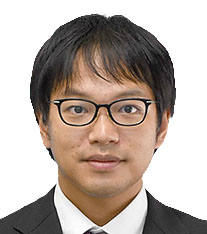
Research Associate Professor
Faculty of Medicine, Dentistry and Pharmaceutical Sciences
Okayama University
Outline
Mitochondria are intracellular organelles responsible for energy production, and their abnormalities have been implicated in various diseases. In this study, I will apply various technologies in new animal models to elucidate the spreading of abnormal mitochondria throughout the body and associated functional changes. Through this research, I aim to establish a new concept of mitochondrial abnormality, deepen our understanding of diseases contributed by mitochondrial abnormalities, and create new treatment.
Kohei Omachi
Extracellular matrix-driven epithelial tissue development and homeostasis
Grant No.:JPMJAX2323
Researcher
Kohei Omachi
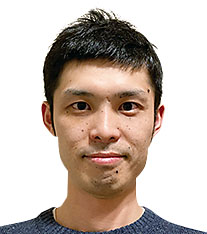
Special Postdoctoral Researchers
Center for Biosystems Dynamics Research
RIKEN
Outline
Extracellular matrix (ECM) alters the quantity, composition, and deposition patterns spatiotemporally and controls cell identity and behavior during tissue morphogenesis and homeostasis. However, due to the lack of tools to visualize, measure, and manipulate ECM dynamics, how ECM dynamics regulate cell behavior and fate is poorly understood. This study will visualize ECM dynamics and manipulate ECM compositions in vivo to analyze cell behavior and tissue architecture closely involved with ECM dynamics. This study reveals the mechanism underpinning how ECM regulates epithelial tissue morphogenesis and homeostasis.
Kosuke Ogata
Global analysis of structural dynamics of phosphoproteins
Grant No.:JPMJAX2324
Researcher
Kosuke Ogata
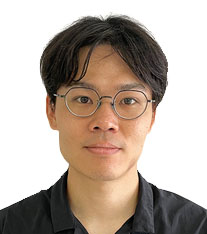
Assistant Professor
Graduate School of Pharmaceutical Sciences
Kyoto University
Outline
Protein phosphorylation is regulated by the activity of kinases and phosphatases, but it is not yet clear how the catalytic efficiency of these enzymes depends on the “substrate conformation”. In this study, I will elucidate the substrate structure dependence of kinase-phosphatase reactions on a proteomic scale. This study will provide a methodology for the functional analysis of unknown phosphorylation modifications.
Hikari Okita
Controlling template-directed synthesis and structure of artificial nucleic acid by liquid-liquid phase separation
Grant No.:JPMJAX2325
Researcher
Hikari Okita
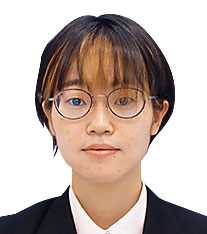
Assistant professor
Institute of Integrated Research
Institute of Science Tokyo
Outline
L-aTNA, which is derived from a natural amino acid, L-threonine, has prominent functions as biological tools compared with DNA. L-aTNA would be applicable to nucleic acid medicine and nanotechnology. However, since natural enzymes cannot recognize L-aTNA, enzymatic reaction of L-aTNA like a polymerase-mediated primer extension is nearly impossible. To solve this problem, I have successfully established chemical template-directed synthesis of L-aTNA. In this research, I develop (i) artificial life system based on replication of L-aTNA inside liposomes, (ii) control of template-directed synthesis by liquid-liquid phase separation (LLPS), and (iii) synthesis of genome-sized L-aTNA strands using liquid crystallization technology of L-aTNA. The de novo technologies will allow development of not only artificial life, but also nanotechnology and nucleic acid medicine.
Machiko Katori
Unraveling heterogeneity in genome-wide mutation rates through epigenome
Grant No.:JPMJAX2326
Researcher
Machiko Katori

Researcher
International Institute for Integrative Sleep Medicine
University of Tsukuba
Outline
It has become evident that mutation rates vary across the entire genome. However, to gain a comprehensive understanding of this phenomenon, it is essential to extract explanatory variables capable of classifying the genome at a finer resolution than current genome categories, such as enhancer and promoter regions. This, in turn, enables a comprehensively analysis of the non-uniformity of mutation rate based on them. This study aims to elucidate the mechanisms underpinning this non-uniformity by integrating perspectives ranging from the macroscopic, such as chromosomal 3D structure, to the microscopic, including local epigenetic patterns. Through the description of features that contribute to mutation rates, I seek to uncover the generative mechanisms behind the heterogeneity in mutation rates.
Koji Kawasaki
Functional analysis of molecular basis of topological operons
Grant No.:JPMJAX2327
Researcher
Koji Kawasaki

Research Associate
Institute for Quantitative Biosciences
University of Tokyo
Outline
Gene expression is precisely regulated through regulatory regions in the genome called as enhancers. Recently, it has been suggested that enhancers form structured units called “topological operons” that regulate multiple genes simultaneously. This project aims to develop a new quantitative approach to uncover the principle of the topological operons using a high-throughput live imaging-based methods.
Minoru Kawatani
Development of Raman protein for multiplex bioimaging
Grant No.:JPMJAX2328
Researcher
Minoru Kawatani
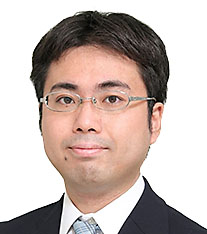
Assistant professor
Institute of Integrated Research
Institute of Science Tokyo
Outline
In bioimaging using fluorescent proteins, the number of molecules that can be simultaneously observed is limited due to the overlap of broad fluorescence spectra. We focus on Raman scattering, whose spectra are 50-100 times narrower than fluorescence, and aim to establish novel imaging tools for the simultaneous observation of various biological phenomena through the development of multicolored ‘Raman proteins.’ These Raman proteins are well-suited for observation with Raman imaging, which offers superior simultaneous multi-detection capabilities compared to fluorescence imaging.
Ryuichi Kimura
Development of a probe for profiling functional RNA
Grant No.:JPMJAX2329
Researcher
Ryuichi Kimura
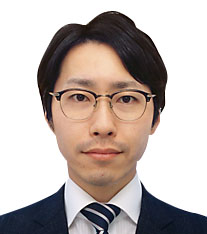
Assistant Professor
Institute of Resource Development and Analysis
Kumamoto University
Outline
In neurodegenerative diseases, the accumulation of aggregates, which are not typically observed in healthy cells, leads to cell death. These aggregates are non-membrane organelles formed through the phase separation of components such as RNA and proteins. Due to their non-membrane nature, isolating them intact poses a considerable challenge, and our understanding of their constituent factors remains limited. This research aims to establish a technological foundation for investigating RNA within minute intracellular regions. By utilizing this approach, we seek to unravel the RNA content encapsulated within aggregates in disease model cells and elucidate its connection to neurodegeneration.
Kazufumi Kunimura
Demonstration of a fetal protection molecule acting in the establishment and maintenance of pregnancy and development of methods for its application
Grant No.:JPMJAX232A
Researcher
Kazufumi Kunimura
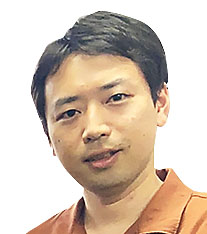
Associate Professor
Medical Institute of Bioregulation
Kyushu University
Outline
The uterus and placenta, the pregnancy sites, are thought to have well-developed mechanisms to prevent maternal immune cells from mistakenly attacking the fetus. In this project, I will examine the possibility that a bioactive lipid with immunosuppressive properties originally discovered may function as a fetal protection molecule. In addition, I want to identify immune and non-immune cells that give and receive this functional substance and unravel the relationship between these cells and immune cells. Furthermore, I aim to develop a method to control this substance and construct a new treatment to overcome infertility.
Keita Kohno
Mechanism of pain remission by CD11c+ microglia derived IGF1
Grant No.:JPMJAX232B
Researcher
Keita Kohno

Assistant Professor
Graduate School of Pharmaceutical Sciences
Kyushu university
Outline
Neuropathic pain is chronic pain caused by damage to the somatosensory nervous system. Recently, I have found that CD11c positive microglial cells, which are increased in the spinal cord, resolve neuropathic pain via insulin like growth factor (IGF1). In this study, I will contribute to the further elucidation of neuropathic pain pathology and the development of novel therapeutic strategies by clarifying the mechanism by which IGF1 suppresses pain, using gene modification technology, pain behavior tests, cell sorting technology, and gene expression analysis.
Takayuki Shimizu
A new concept of redox signaling considering polysulfide
Grant No.:JPMJAX232C
Researcher
Takayuki Shimizu
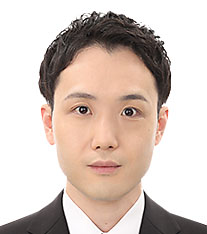
Associate Professor
Division of Natural Sciences
Nara Women’s University
Outline
It is emphasized the universality and importance of polysulfide as a biological factor that has supported living organisms from the prebiotic Earth. This study aims to elucidate a new redox signalling mechanism, focusing on the ‘coordinated transcriptional regulation by polysulfide and reactive oxygen species’. The results will not only revolutionise our understanding of life phenomena based on redox reactions, but also lead to the development of new treatments for various diseases caused by redox imbalance.
Daisuke Suzuki
Regulation of human placental stem cell function by endogenous retroviruses
Grant No.:JPMJAX232D
Researcher
Daisuke Suzuki
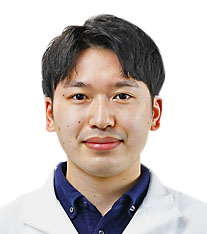
Program-Specific Researcher
Center for iPS Cell Research and Application
Kyoto University
Outline
The human placenta completes its life span after a 10-month gestation period, and cytotrophoblasts (CTs), which function as stem cells of the placenta, decline in both quality and quantity during this short period. Recently, endogenous retroviruses have been shown to promote cell senescence in a variety of aging tissues. Interestingly, it has been well known that endogenous retroviruses are activated in placenta and are involved in placental evolution. Therefore, this study focuses on endogenous retroviruses and aims to elucidate the molecular mechanisms that cause impaired stem cell function in CT during human placental development.
Koji Hashimoto
Construction of Transcriptional Regulation System using Unnatural Non-coding DNA
Grant No.:JPMJAX232E
Researcher
Koji Hashimoto
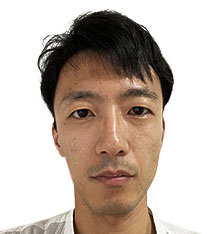
Assistant Professor
Graduate School of Arts and Sciences
The University of Tokyo
Outline
Synthetic biology research aimed at extending cellular functions is useful for biomanufacturing and medical applications, as well as for getting closer to the origin of cells. I have succeeded in expressing unnatural proteins by encoding information of amino acids on unnatural base pairs (UBPs), which can be replicated in the same way as natural base pairs. In this study, I will introduce UBPs into transcriptional regulation control DNA and establish a precise method for controlling gene expression. It also opens the door to create an artificial cell controlled by UBPs.
Masahiro Hiraizumi
Development of a new knock-in tool utilizing modified recombinases
Grant No.:JPMJAX232F
Researcher
Masahiro Hiraizumi
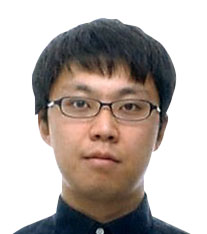
Assistant Professor
The Graduate School of Engineering
The University of Tokyo
Outline
The Large Serine Recombinase (LSR) holds promise as a long-chain DNA knock-in technology inherent to the genome. This study aims to elucidate the diverse target DNA recognition mechanisms of LSR through biochemical and structural biology analyses. By gaining insights into these mechanisms, I seek to understand the target DNA recognition of LSR and gather information for the design of novel LSR variants with enhanced base specificity. Consequently, my objective is to expand the applicability of gene knock-in technology utilizing LSR.
Takafumi Furuhata
Chemical programming of the degradation pathway of the target protein based on the ubiquitin code
Grant No.:JPMJAX232G
Researcher
Takafumi Furuhata
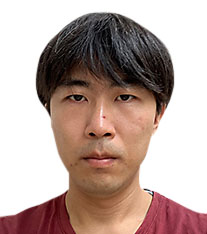
Assistant Professor
School of Engineering
The University of Tokyo
Outline
Polyubiquitin is a translational modification that mediates the degradation of intracellular proteins. In this research, I focus on branched polyubiquitin chains in particular and develop a chemical method enabling enzyme-independent targeted ubiquitination that strongly induces the degradation of target proteins. In addition, I also investigate the structural motif of branched chains that selectively direct substrates to each of the major degradation pathways, the proteasome pathway and the autophagy pathway, leading to the actualization of molecular technologies that allow us to control degradative pathway of target proteins depending on the cellular environment and the properties of target proteins.
Takashi Matsuda
Brain angiotensin II: production system and physiological roles
Grant No.:JPMJAX232H
Researcher
Takashi Matsuda
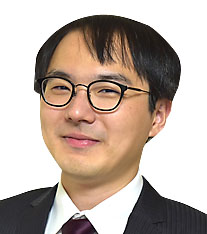
Designated Associate Professor
Institute for Advanced Study
Gifu University
Outline
Cells that express AT1a, the receptor for angiotensin II (Ang II), are present in various brain regions. However, Ang II in body fluids cannot directly affect these cells because the blood-brain barrier typically prevents the transport of Ang II into brain tissue. Therefore, the existence of “brain Ang II”, which is produced within the brain, has been suggested, but the details are unknown. In this study, we aim to elucidate the production system and physiological roles of brain Ang II.
Kensuke Miyake
Elucidation of transcription factor responsible for basophil maturation
Grant No.:JPMJAX232I
Researcher
Kensuke Miyake
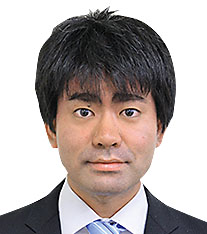
Associate Professor
Institute of Integrated Research
Institute of Science Tokyo
Outline
Basophils are the least common granulocytes representing less than 1% of circulating leukocytes. Recent research have unraveled the critical roles of basophils in the induction of allergic inflammation and protective immunity against parasites. However, the detailed differentiation pathways of basophils remain largely elusive. In this project, I address this issue by using highly-sensitive single-cell RNA-sequencing technique and clarify the molecular mechanisms underlying the differentiation and maturation of basophils in mice and humans.
Takaaki Miyamoto
Supramolecular peptides enabling intercellular transport of DNA for chloroplast transformation in plants
Grant No.:JPMJAX232J
Researcher
Takaaki Miyamoto
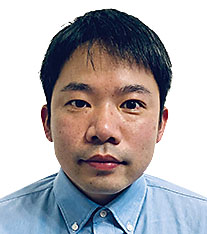
Lecturer
Institute of Integrated Research
Institute of Science Tokyo
Outline
Plant chloroplast transformation has the potential to boost crop yields by improving photosynthesis and increasing the production of CO2-utilizing materials. However, achieving this in monocotyledons, which include major grain crops, has proven to be challenging. The objective of this project is to develop supramolecular peptides that enable intercellular DNA transport, thus facilitating genome modification in undifferentiated germ cells and enabling chloroplast transformation in monocotyledonous plants.
Yuka Yashiro
Molecular basis for regulation of microRNA expression by RNA modifying enzymes
Grant No.:JPMJAX232K
Researcher
Yuka Yashiro

Project Research Associate
Graduate School of Frontier Sciences
The University of Tokyo
Outline
In recent years, RNA modifying enzymes, which chemically modify RNA molecules, have been revealed to be involved in controlling RNA maturation and gene expression regulation. This research project focuses on the RNA modifying enzymes that regulate the expression levels and functions of small RNA molecules called microRNAs. The goal of this project is to elucidate how RNA modifying enzymes recognize and act on microRNAs at the molecular and atomic levels through structural and biochemical analysis.













